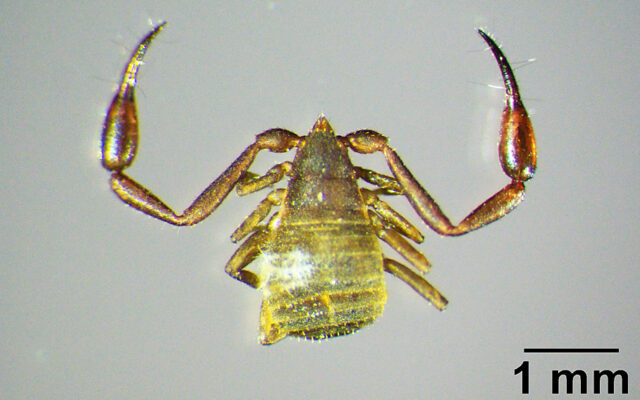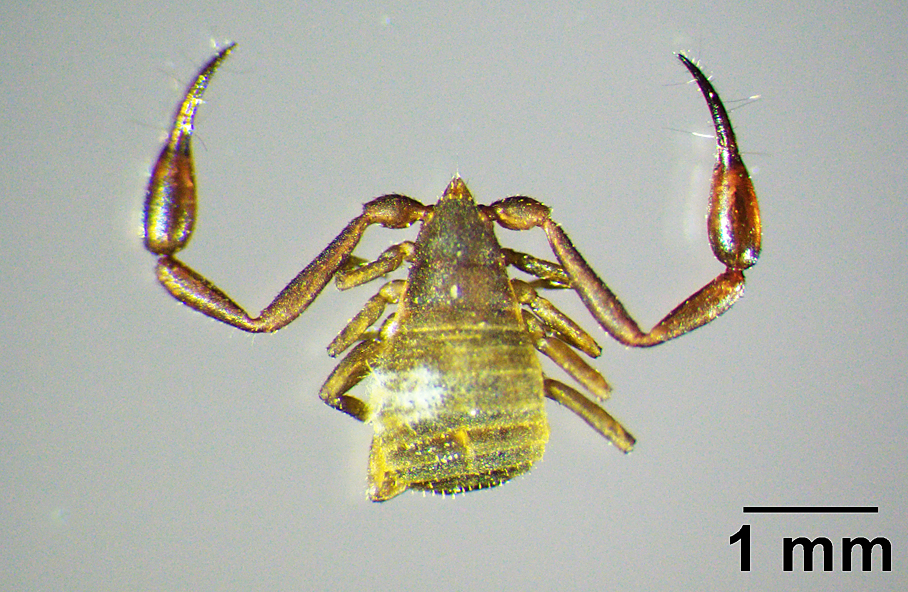
There are scorpions in Maine, and they’re probably in your house
By Julia Bayly, Bangor Daily News Staff
Mention scorpions and you are likely to think of those desert arachnids with the curved tails and the venomous stinger on the end. But Maine has its own scorpions, and they are quite likely sharing your living space.
Pseudoscorpions are found all over the world. The pseudoscorpions found in Maine are native to the area and are among the smaller of the 3,000 species in the family. They measure around an eighth of an inch long, though the largest member of the genus can get up to half an inch long.

MAINE SCORPIONS — Tiny pseudoscorpions are common in Maine and really quite beneficial in controlling insect pests.
“They are really neat little critters,” said Jim Dill, pest management specialist with University of Maine Cooperative Extension. “They are actually good to have around.”
Pseudoscorpions have pear-shaped bodies and two pincer apendiages. They are predators that use the pincers to grab their prey. Only one of the pseudoscorpion’s pincers is functional and it has a venom-containing stinger that the pseudoscorpion uses to grab and immobilize its prey. The pincer on the opposite arm does not open or close.
“Those pincers are so small there is no possible way they can use them to sting a person,” Dill said. “Even if they could, the small amount of venom that would come out would not hurt you.”
Dill said the tiny arachnids eat small insects and mites found in homes — pests that people want to get rid of anyway.
“You usually see them in your bathtub or in a sink,” Dill said. “I think that’s because as they are crawling around they can get to the edge of a sink or tub then slide down and can’t climb back up because the sides are too slippery.”
If you find a pseudoscorpion in your house, Dill said you can just leave it alone, as it is helping out ridding your living space of tiny insect pests. But, if they do creep you out, simply slide a piece of paper under it and carefully carry it outside and release it.
“They are common outside in leaf debris looking for their prey,” Dill said. “They can move fairly fast and they are so tiny most people really never even see them.”
They are also called book scorpions as they are often found around books preying on tiny booklice. In fact, the first recorded description of pseudoscorpions is attributed to the ancient Greek scholar Aristotle, who found them among scrolls in a library.